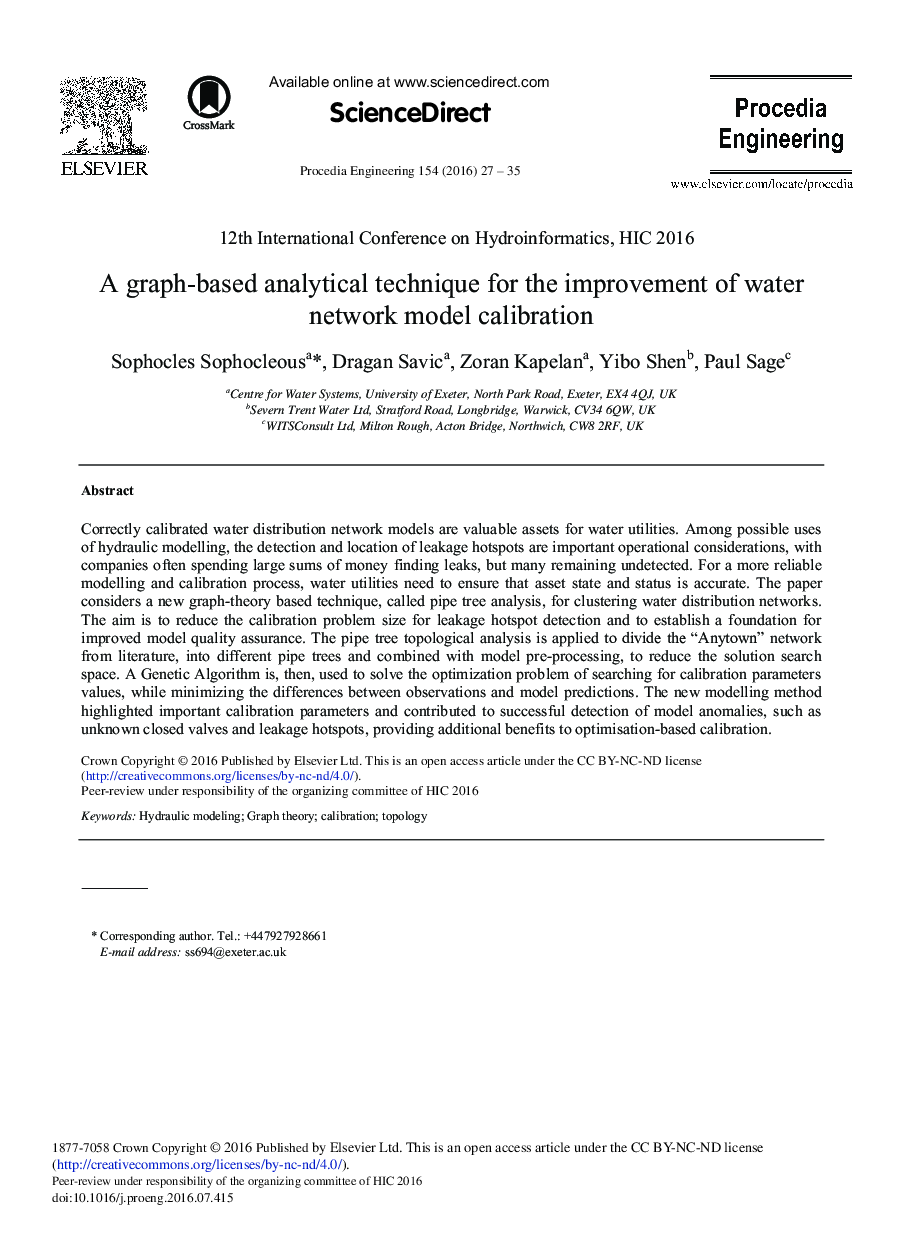| Article ID | Journal | Published Year | Pages | File Type |
|---|---|---|---|---|
| 5030427 | Procedia Engineering | 2016 | 9 Pages |
Correctly calibrated water distribution network models are valuable assets for water utilities. Among possible uses of hydraulic modelling, the detection and location of leakage hotspots are important operational considerations, with companies often spending large sums of money finding leaks, but many remaining undetected. For a more reliable modelling and calibration process, water utilities need to ensure that asset state and status is accurate. The paper considers a new graph-theory based technique, called pipe tree analysis, for clustering water distribution networks. The aim is to reduce the calibration problem size for leakage hotspot detection and to establish a foundation for improved model quality assurance. The pipe tree topological analysis is applied to divide the “Anytown” network from literature, into different pipe trees and combined with model pre-processing, to reduce the solution search space. A Genetic Algorithm is, then, used to solve the optimization problem of searching for calibration parameters values, while minimizing the differences between observations and model predictions. The new modelling method highlighted important calibration parameters and contributed to successful detection of model anomalies, such as unknown closed valves and leakage hotspots, providing additional benefits to optimisation-based calibration.
